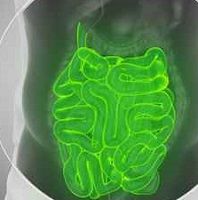Article
Researchers Aim to Determine the Two Subtypes of Crohn's Disease
Author(s):
Researchers from the University of North Carolina examined the gene expression and regulation in colon tissue from patients to better understand the cellular and molecular mechanisms that make up Crohn’s disease.

There are two clinically relevant molecular subtypes of Crohn’s disease, according to findings published in the BMJ publication Gut.
Researchers from the University of North Carolina examined the gene expression and regulation in colon tissue from patients to better understand the cellular and molecular mechanisms that make up Crohn’s disease. The 21 children involved in the study were both Crohn’s disease and control patients. The investigators used previously published expression data from a large cohort study of pediatric Crohn’s disease patients who were never before treated.
According to the researchers, the most “surprising” finding of the study was how the gene expression and regulation were distinguished between the two subtypes of Crohn’s disease. In one subtype of the disease, they explained, the pattern of gene expression seemed to be normal colon tissue. In the other subtype; however, the pattern normally seen in the ileum was observed in the colon. In the colon like cases, the patients were more likely to have gut inflammation visible during the colonoscopy, rectal disease and severe enough colon inflammation to require a colectomy.
"Many of the genes that were different between the two Crohn's subtypes are markers that distinguish the colon from the ileum, despite these being colon biopsies,” first co author Jeremy Simon, PhD, said in a press release.
Another distinction among the subtypes was their gene expression — the basic functions of the affected cells were different on the genetic level.
"This suggests that these molecular programs or baseline genomic signatures of Crohn's subtypes exist independently of patients' ages or treatment histories," co senior author Shehzad Z. Sheikh, MD, PhD said in the statement.
In the future, the researchers want to validate their findings using a larger cohort, and they recently received a National Institutes of Health grant to do so. Additionally, they plan to do a long-term study to test Crohn’s patients’ subtypes when they are originally diagnosed and then follow up to see if the disease changes or follows the predicted prognosis.
"We hope one day to be able to test Crohn's patients for the subtype of the disease they have, and thus determine which treatment should work best," Sheikh said. "The idea is to find the best therapeutic course for each patient as quickly and efficiently as possible."
Related Coverage:
Can Alternative Therapies for Irritable Bowel Disease Really Be Effective?
Fibromyalgia Medication Can Potentially Relieve IBS-Related Pain





